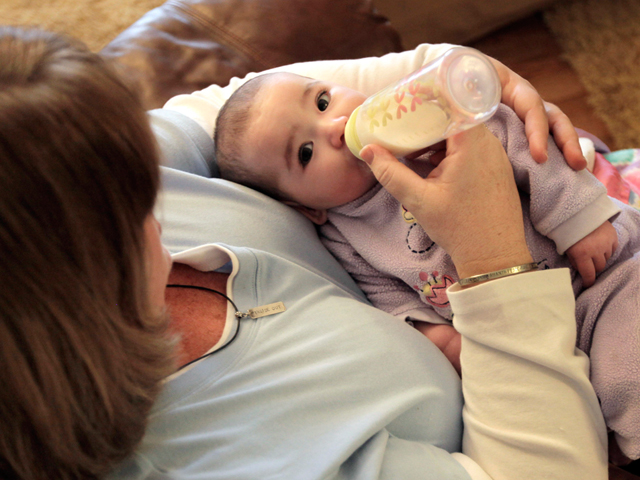For new parents, providing the best nutrition for their baby is a top priority. While breastfeeding is often considered the ideal source of nourishment, circumstances may arise that make it necessary to supplement or switch to baby formula. In this comprehensive guide, we’ll delve into the basics of baby formula, helping parents make informed choices to ensure their little ones receive the nutrients they need for healthy growth and development.
Types of Baby Formula
Baby formulas are designed to mimic breast milk’s composition and provide essential nutrients to infants. There are three main types of baby formula:
a. Cow’s Milk Formula: This type is the most common and is made from cow’s milk protein. It’s fortified with nutrients like iron, calcium, and vitamins to meet a baby’s needs.
b. Soy-Based Formula: Soy formula is made from soy protein and is suitable for babies who are lactose intolerant or have a milk allergy. It’s essential to consult a pediatrician before using soy formula, as some babies may still react to it.
c. Specialized Formulas: These formulas are designed for specific needs, such as premature babies, infants with allergies, or those with digestive issues. They may be hydrolyzed (broken down proteins) or amino acid-based to be gentler on sensitive tummies.
Reading the Label
Understanding the information on a baby formula label is crucial for choosing the right option for your baby. Here’s what to look for:
a. Ingredients: The main ingredients should include a carbohydrate source (usually lactose or corn syrup solids), a fat source (often vegetable oils), and a protein source (either cow’s milk or soy protein).
b. Nutrient Content: Look for essential nutrients like iron, calcium, vitamins (A, D, E, and K), and omega-3 fatty acids (DHA and ARA), which are vital for brain and eye development.
c. Allergens: If your baby has allergies, check for potential allergens like cow’s milk protein, soy, or other common allergens.
Preparing and Feeding
a. Mixing: Follow the manufacturer’s instructions for mixing the formula with water. Use clean, safe water to prevent contamination.
b. Temperature: Always test the formula’s temperature before feeding. It should be warm, not hot, to prevent scalding.
c. Feeding Amounts: Newborns typically consume around 1.5 to 3 ounces of formula per feeding, gradually increasing as they grow. Follow your baby’s cues for hunger and fullness.
Transitioning from Breast Milk to Formula
Transitioning from breast milk to formula can be challenging. Here are some tips:
a. Gradual Introduction: Start by introducing one bottle of formula per day and gradually increase as your baby gets used to the taste and digestion.
b. Pumping: If you plan to stop breastfeeding, gradually reduce pumping sessions to avoid engorgement and discomfort.
c. Comfort and Bonding: Maintain skin-to-skin contact and eye contact during feeding to create a comforting and bonding experience, similar to breastfeeding.

Cleaning and Sterilizing
Proper hygiene is essential when preparing and feeding baby formula:
a. Sterilizing Equipment: Sterilize bottles, nipples, and other feeding equipment before the first use and periodically thereafter.
b. Cleaning Routine: Wash bottles and equipment with warm, soapy water after each use. Use a bottle brush to clean hard-to-reach areas.
c. Sanitizing: Consider using a dishwasher with a sanitizing cycle or a microwave steam sterilizer to ensure thorough cleaning.
Conclusion
Choosing and understanding baby formula is a significant aspect of infant care for parents who may need to supplement or switch from breastfeeding. While breastfeeding offers unique benefits, modern baby formulas are designed to provide essential nutrients for healthy growth and development. By reading labels, following proper preparation and feeding guidelines, and maintaining good hygiene, parents can confidently provide the best nutrition for their little ones. Remember, consulting a pediatrician is crucial when making decisions about feeding and nutrition to ensure the best outcomes for your baby’s health and well-being. Visit WhatIsFullFormOf where you will find lots of useful tips and information about baby formula.





